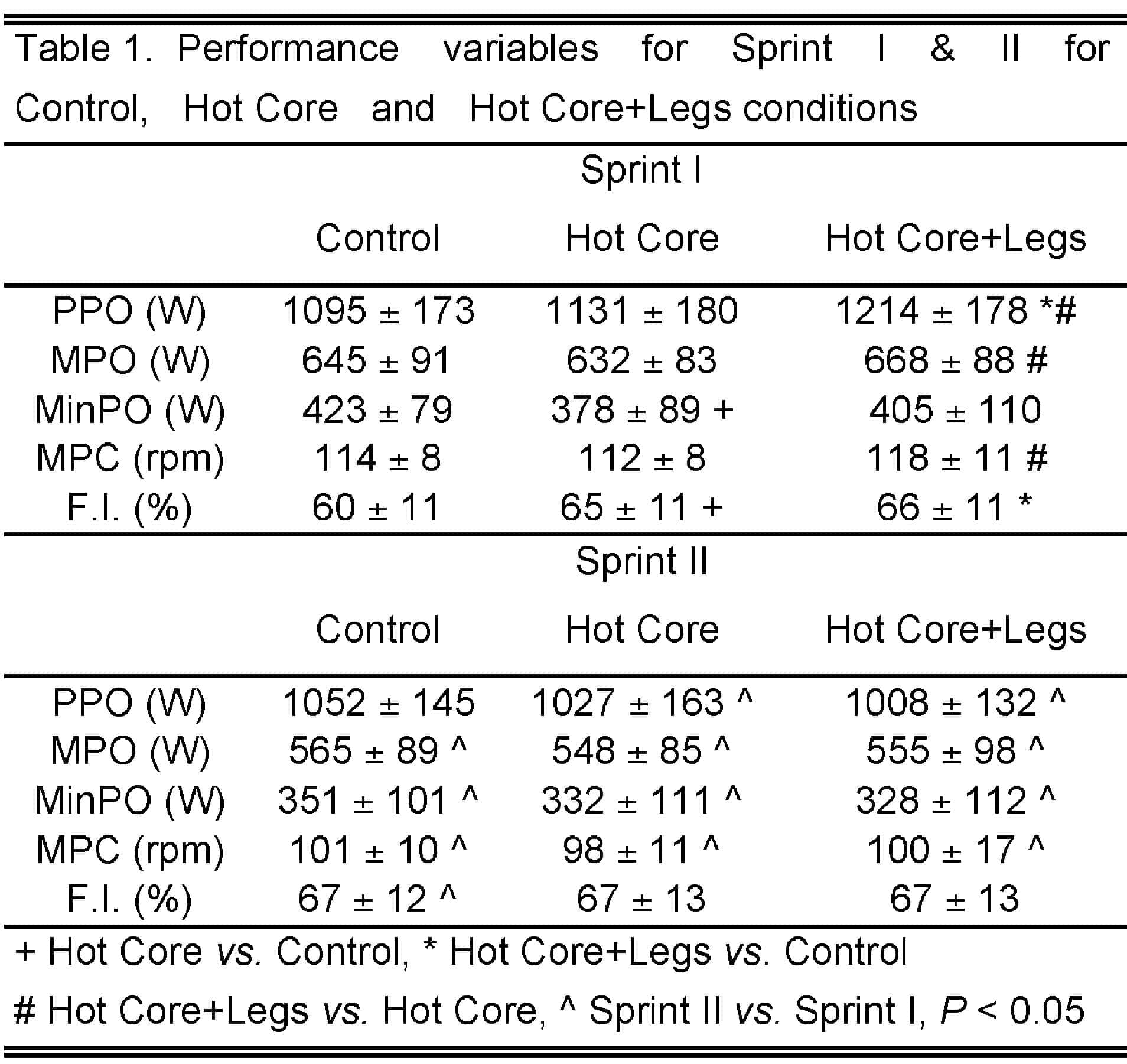An elevated muscle temperature increases power production in man (Sargeant 1987), however elevating core body temperature has been shown to reduce force generation during prolonged maximal voluntary contractions (Nybo & Nielsen, 2001). The purpose of this study was to investigate the effect of an increase in core body temperature with and without elevations in muscle temperature on power output during repeated high-intensity cycle exercise.
Following local ethics committee approval nine healthy males (age 20 ± 1 years (mean ± S.D.), height 185 ± 6 cm, body mass 77.6 ± 12.2 kg) completed three experimental trials in randomised order, after habituation to the exercise test. Condition 1, subjects were immersed in hot water (42.9 ± 0.2 °C) up to the gluteal fold for 40 min and up to the sternal notch for the last 5 min (Hot Core+Legs). Condition 2, subjects were immersed in hot water up to the sternal notch until core body temperature (rectal) increased to 38.5 °C while the leg temperature was maintained at normal with ice packs and cold water (Hot Core). Condition 3, subjects stood in an empty tub for 45 min (Control). Ten min after each intervention subjects completed two 30-s sprints on a cycle ergometer (frictional load 0.075 kg kg-1 body mass) with 4 min recovery between sprints. Power output was corrected for flywheel acceleration. Muscle (vastus lateralis) temperature was measured at rest and 5 min before the first sprint (pre-SpI). Data were analysed using repeated measures ANOVA with Tukey post-hoc where appropriate. Statistical significance was accepted at P < 0.05.
Prior to the first sprint (SpI) core (rectal) temperature was significantly greater in both hot trials than Control (Hot Core+Legs, 38.7 ± 0.2 °C; Hot Core, 38.6 ± 0.2 °C; Control, 37.4 ± 0.3 °C, P < 0.05). Muscle temperature was significantly greater (P < 0.05) pre-SpI in the Hot Core+Legs (39.1 ± 0.5 °C) compared to Control (35.6 ± 0.4 °C) and Hot Core (35.5 ± 1.5 °C), P < 0.05. Mean power output (MPO) and pedal cadence (MPC) was ~5 % higher in Hot Core+Legs compared with Hot Core (SpI, P < 0.05, Table 1). Peak power output (PPO) was greater in Hot Core+Legs compared with both Control and Hot Core (SpI, P < 0.05). Minimum power output (MinPO) was greater in Control compared to Hot Core, which was reflected by a lower fatigue index (F.I.) compared to both hot conditions (SpI, P < 0.05). There were no differences in any power variables between conditions in the second sprint.
The results of this study show that an increase in core (rectal) temperature alone has no beneficial effect on repeated maximal exercise performance. The findings demonstrate that the beneficial effects of pre-warming on subsequent power output are more related to a higher muscle rather than core temperature. Any temperature-induced improvements in the first 30-s sprint did not persist during a subsequent sprint.

